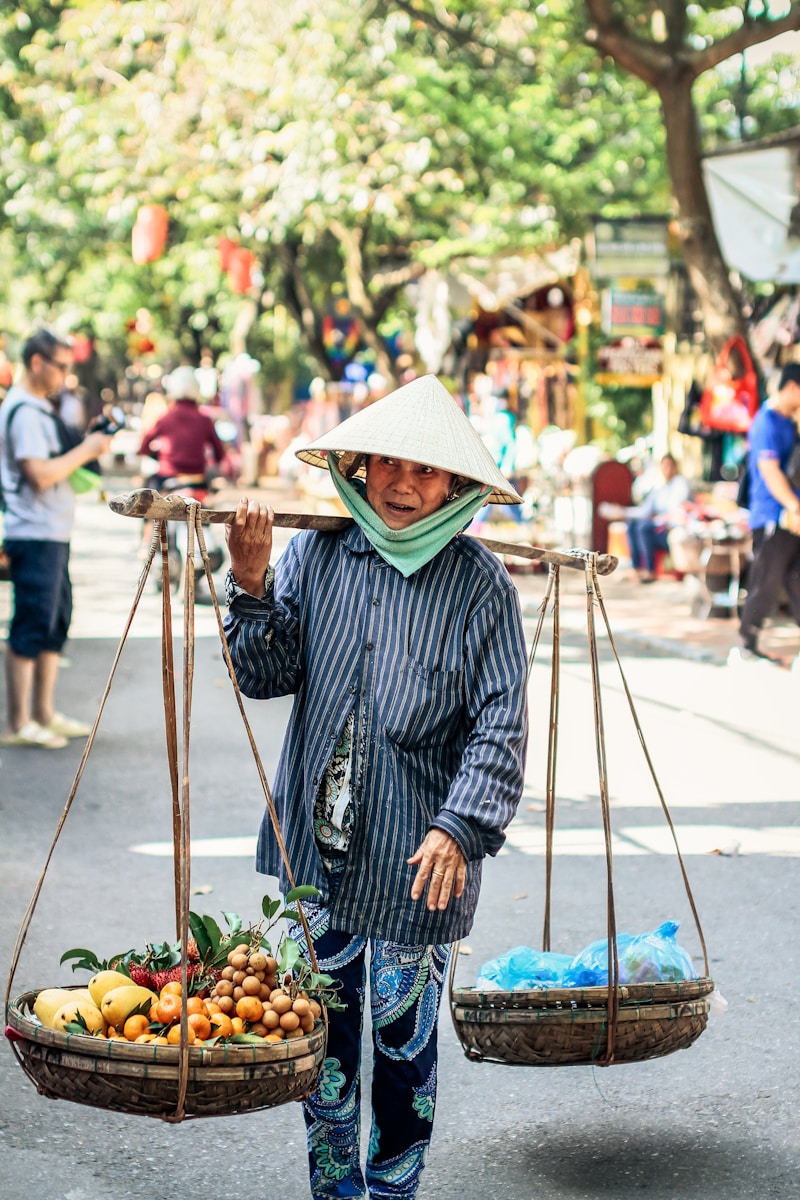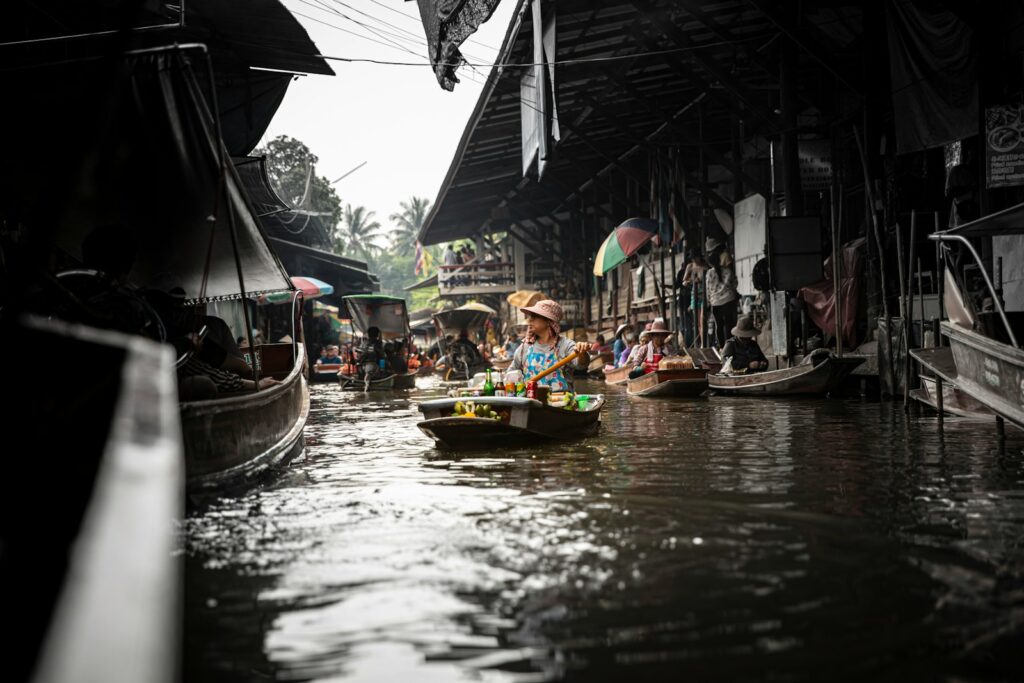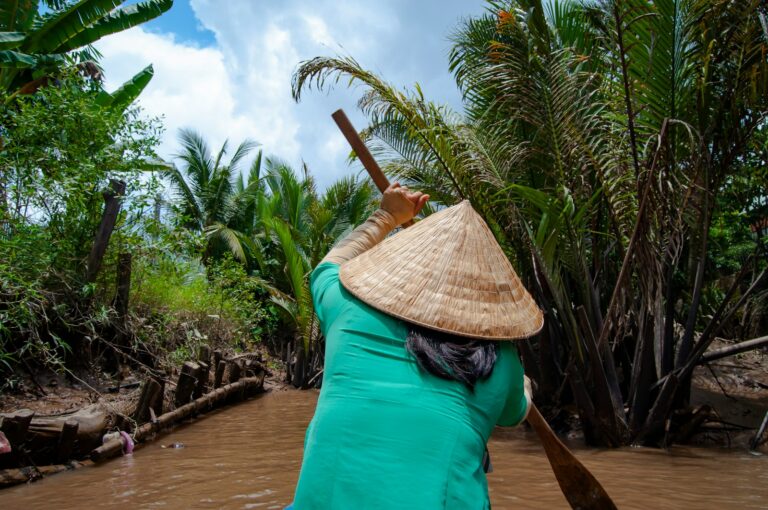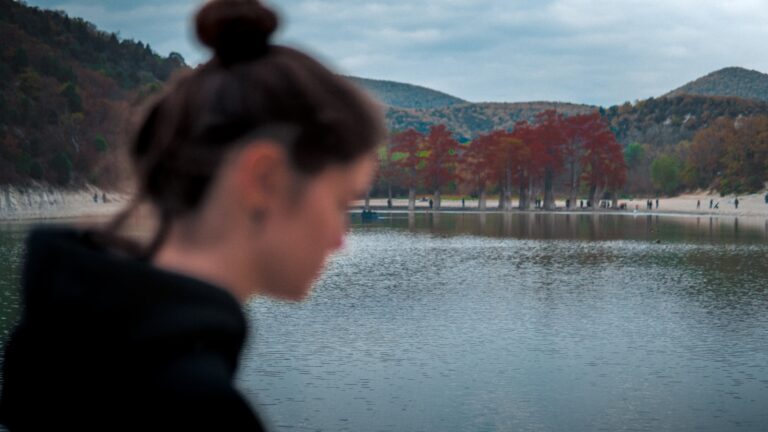A Season That Rises With the Water
In the heart of Tân Hưng, in the Đồng Tháp Mười region of Long An, the season of floating water arrives like a quiet visitor. Fields and canals swell until they merge into a vast mirror that stretches beyond sight. To strangers, the sight might seem alarming—land swallowed by water—but to the people here, it’s the lifeblood of the year.
The floods arrive with purpose. They bring rich silt that sinks into the soil, preparing the fields for the next harvest. They bring an explosion of fish and shrimp, nature’s own gift after months of waiting. The river is generous in this season, and the community knows how to welcome it.
Life slows and shifts with the water’s rise. In some places, boats replace bicycles and motorbikes. Farmers, their faces etched with the stories of decades, work the flooded fields with practiced ease—casting nets, setting traps, and hauling in baskets heavy with cá linh, a small silver fish, and fresh shrimp. Kitchens come alive with the season’s flavors, none more beloved than “lẩu cá linh bông điên điển,” a fragrant hotpot of fresh fish and the bright yellow flowers of the điên điển plant.
But the floating season is more than a harvest. It’s a time that draws people together. Neighbors tie boats for each other, share the day’s catch, and laugh over steaming bowls. There’s a rhythm here—a shared understanding that the water gives as much as it takes.
For a visitor, it’s a kind of magic. Camera in hand, I follow a fisherman as he casts his net in the golden light. The arc is perfect, the splash soft, the moment fleeting. I try to frame it, but I know the photograph will only hint at what it feels like to stand here—the smell of wet earth, the lapping of water against the boat, the quiet focus in his eyes.
The people here don’t fight the floods. They rise with them. They let the water shape their days, their work, their meals, their gatherings. It’s a way of life that belongs to this land, passed down through generations who have learned that survival isn’t about resisting nature but moving with it.
I think of Mr. Nguyễn Văn Nguyên and his wife, of Mr. Nguyễn Văn Dũng and his family—faces weathered by sun and time, hands strong from work. The water comes each year, and each year they adapt, their spirit unbroken. In their world, resilience isn’t in stubborn resistance but in graceful acceptance, in knowing when to bend.
The season doesn’t last long. By late November, the waters retreat, leaving behind fertile soil ready for planting. Fields reappear, green shoots pushing through, and the cycle begins again. But for a few short months, the Mekong Delta becomes something else entirely—a shimmering, breathing expanse where river and land are one.
It’s here, in this season, that you understand the unspoken bond between the people and their world. You see it in the way fishermen greet the dawn, in the scent of fresh catch cooked over a wood fire, in the bright dots of water lilies against endless silver. You hear it in the splash of a net, the hum of a boat motor, the quiet conversations drifting over the water at dusk.
The floating season in the Mekong Delta is not just a natural event—it’s a love story between land and water, written anew each year. It’s a reminder that beauty often comes from what we can’t control, and that renewal is born from the very floods that might seem destructive.
When I leave, part of me stays behind. The images in my camera will fade in time, but the memory of this place—its people, its waters, its quiet strength—will remain. And each time I think of it, I’ll remember how life here moves not against the current, but with it.
Every August, when the Mekong River swells and the season begins, the transformation feels almost otherworldly. Rice fields vanish beneath a silver sheet of water. The land becomes a vast waterway, dotted with boats and floating flowers. Beneath the surface, schools of cá linh dart like drops of quicksilver, while farmers glide silently across the expanse, nets in hand.
The floods are not an intrusion but an agreement, an annual covenant between river and earth. Water lilies and điên điển flowers bloom in abundance, bright against the calm waters. The air smells of wet soil and fresh fish. Days pass in quiet cycles of work and rest, shaped entirely by the river’s will.
The people of the Mekong understand this better than anyone. They’ve endured countless seasons of water—each with its hardships, each with its blessings. They know that the river is both challenge and provider, and they welcome it with open hands.
This is what I carry away from Tân Hưng: the sight of endless water reflecting the sky, the taste of fish caught hours before, the warmth of people who measure life not by resisting the flood, but by rising with it. And it leaves me with one truth: the water may cover the land, but here, it also sustains it—bringing not just a season, but a promise.




